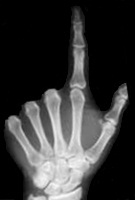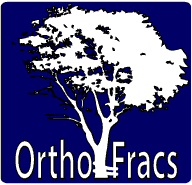Journal Club
July 2010
Far Cortical Locking Can Improve Healing of Fractures Stabilized with Locking Plates
Author: M Bottlang, M Lesser, J Koerber, J Doornink, B Von Rechenberg, P Augat, D Fitzpatrick, S Madey, J Marsh
Institution: Legacy Biomechanics Lab Portland Oregon, University of Zurich Switzerland, Institute of Biomechanics Murnau Germany
Journal: JBJS Volume 92-A, Number 7, July 7 2010
Funding: Direct grant Zimmer National Health Institutes of Health, Author/s received > $10000 Zimmer < $10000 Stryker
Reviewed by
Dr Owen Mattern
MBBS | Senior Accredited Orthopaedic Registrar
Introduction
- Locking plates
- Locking plates rely on secondary fracture healing by callus formation
- Improved fixation in osteoporotic bone
- Biological friendly fixation
- Locking plates are reported to be as stiff as conventional plating
- Can suppress fracture motion and secondary bone healing
- Far-cortical locking
- is capable of reducing stiffness
- Maintain strength
- Act as elastic cantilever beams
- Allows increased motion at fracture site
- Hypothesis
- That a stiffness-reduced far cortical locking construct can improve fracture healing compared with a standard locked plate construct
- Far-locking screw - parallel interfragmentary motion under axial load
- Fracture model in sheep
- 3mm osteotomy gap of tibia stabilized with a standard locking plate and a far-cortical locking plate construct
- Fracture model in sheep
Methodology
- 12 sheep randomly assigned to fixation method
- Calculated on detecting 20% change in torsional strength with 80% confidence
- Monitored radiographically
- Weekly xrays from week 3
- Animals killed at week 9
- Callus assessed with CT and histologically
- Mechanical torsional strength tested
- Plating Construct
- 4.5mm titanium plate
- Six staggered holes
- 2 types of screws
- Fully threaded locking screws
- Partially threaded locking screws
- Construct stiffness tested
- Locked plates mean 3922 +/- 474N/mm
- Far-locking construct
- < 400N 628 +/- 81N/mm (84% lower stiffness)
- > 400N 2672 +/- 594N/mm
- Parallel motion at the osteotomy gap
- Locked plates mean 3922 +/- 474N/mm
- 4.5mm titanium plate
- Animal and Surgical
- Established sheep model approved and conforming to the ethics and animal care committees
- Sheep
- Mean age 2.5 +/-0.8
- Mean weight 61 +/-9kg
- Medial incision over tibia
- Predrilled screw holes with template
- Osteotomy - 3mm gap after plate application
- Plates applied 1mm elevation
- Limb protected with cast and harness
- Allowed full weight-bearing
- Protected animals during sleep to prevent peak loads during standing or bolting to standing position
- Radiography
- Xrays immediately and weekly from week 3
- Quantified callus formation at lateral, anterior and posterior aspects
- After death and implant removal, bone mineral content were qualified by CT
- Mechanical Testing
- Tested strength, stiffness, torsional displacement and energy to failure
- Embedded both ends in cement
- Rotational force around tibia
- Histological
- One longitudinal slice was harvested from midsagittal plane
- Toluidine blue stain to see callus differentiation
- Statistics
- All data reported as mean and standard deviation
- Differences calculated using student T test, repeated measures analysis of variance and paired testing
Results
- Sheep
- Nil complication, able to walk on post-operative day 1
- No difference in osteotomy gap after immediate first gap
- Assessment of Callus
- Periosteal callus increased until week 7
- Far-cortical locking had 58% more callus at week 7 and 37% at week 9 (p<0.05)
- CT at week 9 found far cortical locking group had
- 36% higher total callus
- 90% higher for medial cortex between the group
- 44% greater bone mineral density
- Due to medial cortex having same density as lateral cortex (117% of locked group)
- Medial cortex was 49% lower than lateral cortex in locked plating construct
- 36% higher total callus
- Mechanical Testing and Histology
- Far locking group had higher
- Failure to torsion (54%)
- Absorbed 156% more energy
- 3/6 locked plating specimens had deficient medial cortex bridging callus
- 6/6 far cortical plating specimens had complete cortical bridging
- Far locking group had higher
Discussion
- Some concern that locked bridge plating constructs too stiff and impair fracture motion
- Recommendations exist that need to increase bridging span by omitting screw holes adjacent to fracture site
- Contrasting published data on the effectiveness
- Evidence that less rigid fixation improved fracture healing
- Far-cortical locking had factors to encourage secondary healing
- Reduced stiffness - 6 fold compared to locked plates
- Parallel interfragmentary motion
- Biphasic stiffness - allowed increased stiffness at increasing loads
Pros of Study
- Well designed animal experimental study
- Used validated animal model, callus measurement tools, bone mineral density tests
- Conducted a power analysis
- Clear and well documented surgical and post-operative technique
- Histological analysis of fracture site
- Documented limitations of own study
Cons of Study
- Funded by Zimmer, with authors receiving funding from Stryker
- Used a titanium locking plate
- Specific designed fracture - only 3mm gap
- Only tested torsional strength
- Animal model - need to be careful of clinical application
- Did not look into periarticular plating model
Take home message
- For fracture fixation choice we need to balance an implant that
- Is not so rigid as to depress fracture motion and slow healing
- Has enough strength to resist failure
- Far-cortical locking in a titanium locking plate may offer an option to decrease rigidity whilst retaining biphasic strength
Webpage Last Modified:
13 February, 2011



